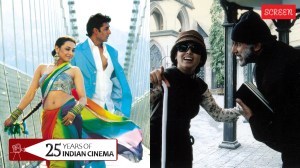Why breast cancer screening is best done at 40
Dr Ramesh Sarin, senior consultant, oncology, Indraprastha Apollo Hospitals, New Delhi, explains new mammography guidelines in the US
 Since breast cancer is treatable if detected early enough, it is imperative to lower the age of screening than consider it an unnecessary drill.
Since breast cancer is treatable if detected early enough, it is imperative to lower the age of screening than consider it an unnecessary drill.As more and more younger women are being diagnosed with breast cancer across the world, the US Preventive Services Task Force has recommended that they start mammography screening at age 40 instead of 50 as previously mandated.
This guideline is significant, given the panel’s influence in public health policies and their adoption across the US, its message to insurers and its cascading effect in other countries.
WHAT DO THE NEW RECOMMENDATIONS MEAN?
Since breast cancer is treatable if detected early enough, it is imperative to lower the age of screening than consider it an unnecessary drill. “In fact, radiological societies globally have been arguing for earlier testing in the high risk group, which comprises women who have a family history of cancer and poor lifestyle parameters. Besides the recent epidemiological data from the US between 2015 and 2019 suggests two per cent increase in incidence among young women. This group also has faster-growing cancers and require annual screening although the panel is continuing with a two-year gap between screenings,” says Dr Ramesh Sarin, senior consultant, oncology, Indraprastha Apollo Hospitals, New Delhi.
WHAT ABOUT THE BREAST CANCER MAP IN INDIA?
In India, oncologists like Dr Sarin and the Radiological Society of India have been recommending mammography from age 40, once in two years, and once every year post-50. “Over the last 10 to 15 years, breast cancer has become more frequent among the younger population, between the ages of 35 and 45. Eleven per cent of our younger women develop breast cancer compared to seven per cent in the West, that too several years earlier than Western women,” she says.
NOT JUST MAMMOGRAM, BUT DEEPER SCANS NEEDED
Sometimes, cancers are too small and may not be picked up by the mammogram. At other times, the dense breast tissue may hide them completely. “Indian women tend to have denser tissue than their Western counterparts. Also less body fat makes it more likely that you’ll have less fatty tissue and more dense tissue in your breasts. That’s why we need to include some extra tests like ultrasound and MRI of the breast as part of the early screening package at age 40. There’s no point missing out 20 per cent of these smaller cancers. But since breast MRIs can be expensive, these should be reimbursed by insurance companies,” says Dr Sarin. She has seen women struggling with getting coverage for diagnostic tests, unless these are associated with their stay in the hospital as patients.
WHY YOU NEED A COMPOSITE SCREENING PACKAGE
All breast cancers are not because of family history. According to Dr Sarin, many women patients are the first in their families to have it because of mutation of genes and normal cells in their body. “Also, we must remember that symptoms may indicate disease progression and Stage 1 and Stage 2 usually show no symptoms. A mammogram at 40 can help women detect this cancer earlier, leading to less aggressive treatment and a higher rate of survival,” she says.
According to the American Cancer Society, early-stage breast cancers have a survival rate of 99 per cent compared to later-stage cancers at 24 per cent.
IF YOUR MAMMOGRAMS ARE CLEAR, WHY SHOULD YOU KEEP DOING THEM?
While it is good to have normal results, it does not mean that your tissues will continue to be normal with advancing years. According to the largest trials in the US, there was a 33 per cent decrease in death from breast cancer in women older than 40 who went in for regular mammograms.



- 01
- 02
- 03
- 04
- 05




























